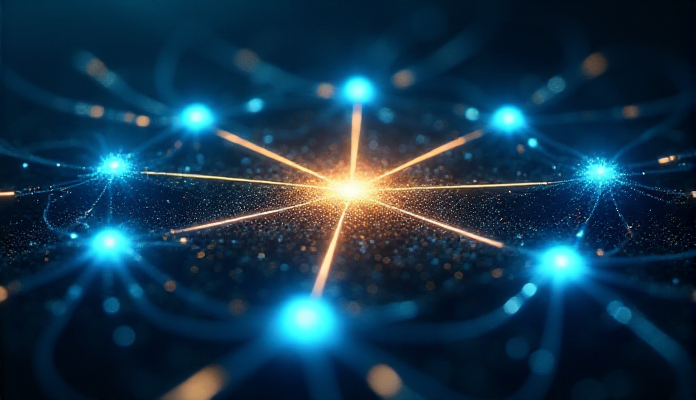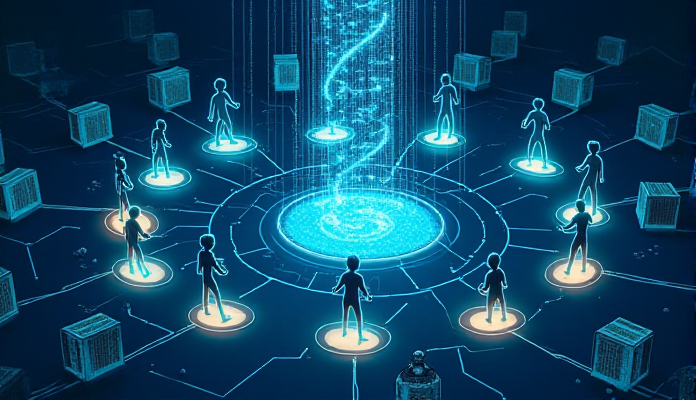Imagine an artificial intelligence that not only knows your inquiries but also where to locate the precise data to properly respond. Retrieval-Augmented Generation (RAG), a novel method challenging artificial intelligence’s infamous inclination to “hallucinate,” or manufacture knowledge, has great power. RAG gives AI interactions fresh degree of accuracy and context by combining the information retrieval and generation processes. This thorough investigation probes the field of RAG and exposes its fundamental ideas and useful applications. As you investigate the benefits and constraints of this innovative technology, you will learn about the key elements of RAG—including large language models (LLMs) and embedding approaches. From addressing data bias to conquering computational obstacles, this paper clarifies the way forward toward creating more dependable and trustworthy artificial intelligence systems. Are you ready to discover how RAG enables artificial intelligence to offer not just perceptive but also grounded in real-world knowledge responses? Explore the future of artificial intelligence accuracy right now!
Retrieval-Augmented Generation (RAG): The AI Revolution That’s Combating Hallucinations

Have you ever asked a query of an AI assistant and gotten a boldly incorrect response? This annoying experience draws attention to a significant artificial intelligence challenge: AI hallucinations. Though remarkable, large language models (LLMs) may make things up and provide responses devoid of a foundation in reality. However, if there were a means to make artificial intelligence more dependable and provide its access to real-world data and accurate responses? Retrieval-Augmented Generation (RAG) helps here.
RAG is transforming artificial intelligence by combining generating and retrieval of information. Imagine an artificial intelligence assistant who not only knows where to locate the precise material to precisely address your questions but also understands them. RAG has great power, and it is significantly helping to prevent artificial intelligence hallucinations.
How Does RAG Work?
You might be wondering, “So how does RAG actually work?” Allow me to disentangle it for you. RAG depends on two main constituents:
- Information Retrieval: First, RAG needs to locate the right information. It does this by using techniques like embedding models, which translate both your query and the knowledge base into a vector space. These vectors allow RAG to efficiently find similar information, enabling it to quickly retrieve relevant data from sources like databases, documents, or websites.
- Text Generation: Once the relevant information is found, a large language model (LLM) is used to generate a comprehensive and coherent response based on the retrieved information. The LLM’s ability to understand and synthesize text is crucial in crafting clear and informative answers.
- Information Retrieval: First, RAG needs to locate the right information. It does this by using techniques like embedding models, which translate both your query and the knowledge base into a vector space. These vectors allow RAG to efficiently find similar information, enabling it to quickly retrieve relevant data from sources like databases, documents, or websites.
Information Retrieval:
- Text Generation: Once the relevant information is found, a large language model (LLM) is used to generate a comprehensive and coherent response based on the retrieved information. The LLM’s ability to understand and synthesize text is crucial in crafting clear and informative answers.
Text Generation:
Combining these two techniques will enable RAG to offer precise, contextually relevant responses. It basically lets artificial intelligence learn and reason from actual data, therefore removing the possibility of “hallucinations” and guaranteeing the consistency of its responses.
Real-World Applications of RAG
RAG is not merely a theoretical idea. Real-world uses of it help to raise AI systems’ dependability and correctness. Customer care chatbots, for instance, are using RAG more and more to offer correct and useful responses to consumer questions. Imagine a chatbot that, rather than merely offering general responses, can quickly access the knowledge base of your business to locate the precise information you require. RAG’s might is evident here.
The Future of RAG
RAG marks a major progress toward more dependable and trustworthy AI systems. Like all technology, though, it presents a certain set of difficulties. The computational capability needed to oversee big information bases is one such constraint. The possibility of data bias influencing the information acquired and the resultant answers presents still another difficulty. These difficulties should be addressed while still seeing a bright future for artificial intelligence accuracy. Future far more advanced and accurate AI systems should be expected as RAG develops, enabling us to make better judgments depending on trustworthy data.
Understanding the Power of LLMs in RAG

Retrieval-Augmented Generation (RAG) is a novel method of artificial intelligence that addresses artificial intelligence hallucinations and guarantees accurate and consistent information from AI systems. RAG is fundamentally based on a strong mix of information retrieval and text generation, where replies are produced in great part by huge linguistic models (LLMs).
The Role of LLMs in RAG
The foundation of RAG’s text generating powers are LLMs. Their training on enormous databases of text and code helps them to grasp and evaluate language in a very human-like manner. Within RAG, LLMs employ their profound knowledge of language to create thorough and cogent answers from the gathered data.
- Understanding Context: One of the most significant contributions of LLMs to RAG is their ability to understand context. They can analyze the retrieved information, taking into account the relationships between different pieces of data, to provide answers that are relevant and meaningful. For example, when answering a question about a specific product, the LLM can consider the product’s features, reviews, and availability to provide a comprehensive response.
- Generating Fluent Text: LLMs are highly proficient at generating human-quality text. They can produce fluent, grammatically correct, and engaging responses that seamlessly integrate the retrieved information. This is crucial for making AI interactions more natural and user-friendly.
- Summarizing Information: In many cases, the retrieved information can be quite extensive. LLMs can effectively summarize this information, extracting key insights and presenting them in a concise and understandable format. This ability to distill complex information into digestible summaries makes RAG more accessible and efficient.
- Understanding Context: One of the most significant contributions of LLMs to RAG is their ability to understand context. They can analyze the retrieved information, taking into account the relationships between different pieces of data, to provide answers that are relevant and meaningful. For example, when answering a question about a specific product, the LLM can consider the product’s features, reviews, and availability to provide a comprehensive response.
Understanding Context:
- Generating Fluent Text: LLMs are highly proficient at generating human-quality text. They can produce fluent, grammatically correct, and engaging responses that seamlessly integrate the retrieved information. This is crucial for making AI interactions more natural and user-friendly.
Generating Fluent Text:
- Summarizing Information: In many cases, the retrieved information can be quite extensive. LLMs can effectively summarize this information, extracting key insights and presenting them in a concise and understandable format. This ability to distill complex information into digestible summaries makes RAG more accessible and efficient.
Summarizing Information:
Benefits of Using LLMs in RAG
Including LLMs offers RAG a number of benefits.
- Increased Accuracy: LLMs’ deep understanding of language and ability to synthesize information significantly enhance the accuracy of RAG systems. By carefully analyzing the retrieved data and considering context, they can generate responses that are more reliable and less prone to hallucinations.
- Improved User Experience: The ability of LLMs to generate fluent, human-quality text makes RAG systems more engaging and enjoyable to interact with. Users can easily understand the provided responses, leading to a more satisfying and productive experience.
- Versatile Applications: LLMs are highly versatile and can be adapted to various tasks and domains. This makes RAG applicable to a wide range of applications, from customer service chatbots to scientific research assistants.
- Increased Accuracy: LLMs’ deep understanding of language and ability to synthesize information significantly enhance the accuracy of RAG systems. By carefully analyzing the retrieved data and considering context, they can generate responses that are more reliable and less prone to hallucinations.
Increased Accuracy:
- Improved User Experience: The ability of LLMs to generate fluent, human-quality text makes RAG systems more engaging and enjoyable to interact with. Users can easily understand the provided responses, leading to a more satisfying and productive experience.
Improved User Experience:
- Versatile Applications: LLMs are highly versatile and can be adapted to various tasks and domains. This makes RAG applicable to a wide range of applications, from customer service chatbots to scientific research assistants.
Versatile Applications:
To sum up, LLMs are crucial parts of RAG since they allow correct and dependable information producing. RAG is a great tool for creating more human-like and reliable AI systems since it allows one to grasp context, produce fluent writing, and summarize material.
The Challenges and Opportunities of RAG

Promising development in artificial intelligence, Retrieval-Augmented Generation (RAG) grounds replies on real-world data to solve AI hallucinations. Leveraging large language models (LLMs), RAG uses a mix of information retrieval and text creation to generate accurate and contextually relevant responses. RAG has opportunities as well as difficulties, though, just as any innovative technology does.
The Challenges of RAG
RAG has great promise, but it’s crucial to recognize the issues that have to be resolved if we are to fully realize it.
- Computational Power: One of the most significant challenges is the computational resources required to manage large knowledge bases. The process of retrieving relevant information and generating responses can be computationally intensive, especially when dealing with vast amounts of data. This can pose limitations for smaller organizations or individuals with limited computing resources.
- Data Bias: Another crucial challenge is the potential for data bias to influence RAG systems. If the knowledge base used by RAG contains biased information, the responses generated will reflect that bias. This can lead to inaccurate or discriminatory outcomes, emphasizing the need for careful curation and diversity in the data sources used to train RAG systems.
- Explainability: Transparency and explainability are crucial for building trust in AI systems. While RAG can provide accurate responses, understanding how it arrives at those conclusions can be complex. Users might have difficulty grasping the reasoning behind the generated answers, particularly when dealing with complex or nuanced topics.
- Computational Power: One of the most significant challenges is the computational resources required to manage large knowledge bases. The process of retrieving relevant information and generating responses can be computationally intensive, especially when dealing with vast amounts of data. This can pose limitations for smaller organizations or individuals with limited computing resources.
Computational Power:
- Data Bias: Another crucial challenge is the potential for data bias to influence RAG systems. If the knowledge base used by RAG contains biased information, the responses generated will reflect that bias. This can lead to inaccurate or discriminatory outcomes, emphasizing the need for careful curation and diversity in the data sources used to train RAG systems.
Data Bias:
- Explainability: Transparency and explainability are crucial for building trust in AI systems. While RAG can provide accurate responses, understanding how it arrives at those conclusions can be complex. Users might have difficulty grasping the reasoning behind the generated answers, particularly when dealing with complex or nuanced topics.
Explainability:
The Opportunities of RAG
Notwithstanding the difficulties, RAG offers interesting chances to develop artificial intelligence and its uses in many spheres.
- Enhanced User Experience: RAG can significantly improve user experience by providing accurate, comprehensive, and contextually relevant information. This is particularly beneficial for applications such as customer service chatbots, where users expect quick and reliable answers to their queries.
- New AI Applications: The ability of RAG to access and process real-world data opens up new possibilities for AI applications. For example, RAG can be used to develop intelligent assistants for research, education, and even healthcare, providing insights based on real-world data and evidence.
- Combating Fake News: RAG can play a vital role in combating misinformation by providing access to accurate and reliable information. By using verified sources, RAG can help users identify and avoid false or misleading content, promoting a more informed and reliable online environment.
- Enhanced User Experience: RAG can significantly improve user experience by providing accurate, comprehensive, and contextually relevant information. This is particularly beneficial for applications such as customer service chatbots, where users expect quick and reliable answers to their queries.
Enhanced User Experience:
- New AI Applications: The ability of RAG to access and process real-world data opens up new possibilities for AI applications. For example, RAG can be used to develop intelligent assistants for research, education, and even healthcare, providing insights based on real-world data and evidence.
New AI Applications:
- Combating Fake News: RAG can play a vital role in combating misinformation by providing access to accurate and reliable information. By using verified sources, RAG can help users identify and avoid false or misleading content, promoting a more informed and reliable online environment.
Combating Fake News:
The Future of RAG
With constant research and development concentrated on overcoming obstacles and increasing its capabilities, RAG’s future seems bright. As technology develops, we should anticipate progressively more advanced and dependable artificial intelligence systems using RAG’s capability. This will help us to improve our awareness of the surroundings, access knowledge more successfully, and make better decisions. For additional information regarding Retrieval-Augmented Generation, I suggest watching this video that is only six minutes long.






This is a really insightful post! I’ve been struggling with AI hallucinations in my own projects, and the concept of RAG, especially how it combines retrieval and generation, makes perfect sense. The idea of grounding the AI in actual data seems like a game-changer. I’m particularly interested to learn more about the specific embedding techniques mentioned – are there any resources you could recommend for further study?
Fantastic overview of RAG! It’s so important to address the issue of AI ‘hallucinations,’ and this post does a great job explaining how RAG tackles it head-on. I’ve seen firsthand how much more trustworthy an AI becomes when it can cite its sources. It’s like having a research assistant that can not only answer questions but also point you to the exact documents they’re drawing from. I wonder, how does RAG handle scenarios where the relevant data is fragmented across multiple sources? That’s something I often encounter.
Really interesting read on RAG! I’ve always been a bit skeptical of AI outputs, fearing the made-up ‘facts.’ RAG’s approach of grounding responses in actual data is a huge step towards building more reliable AI tools. The point about addressing data bias is especially crucial – just feeding the AI any random data won’t solve the problem. It’s important that the underlying knowledge base is curated responsibly. I am keen to see how RAG evolves and becomes more accessible to everyday users.
This is a great explanation of RAG! I’ve been hearing a lot about it, but this really breaks down the core concepts. The idea of grounding AI responses in actual data is so important for building trust.
I’m fascinated by the potential of RAG to combat AI hallucinations. It’s like giving AI a reliable library card! I wonder, how does RAG handle situations where the retrieved data is conflicting or outdated?
Very insightful post! I especially appreciate the discussion about the limitations and challenges, like data bias. It’s important to be aware of these issues when implementing RAG systems.
Thanks for writing this! As someone who works with AI, I’ve found that hallucination is a significant barrier to adoption. RAG seems like a promising solution. Do you have any recommendations for specific tools or libraries for implementing RAG?
This article really clarified how RAG works. I was always a bit confused about how retrieval and generation are combined. It’s encouraging to see the progress being made to make AI more reliable.
RAG sounds incredibly powerful. I can see so many use cases, from customer service to scientific research. Have you explored any examples of RAG being used in healthcare?
I’ve experienced AI ‘making things up’ firsthand, so this article resonates deeply. I’m glad to see a solution like RAG being developed. What are the best strategies for selecting the right embedding method for different types of data?
This is a really well-written, accessible explanation of a complex topic. I especially like how you explained the interplay between LLMs and embedding techniques. Keep up the great work!
The focus on trustworthiness is spot on. The ability to trace the source of AI’s answers is crucial for gaining confidence. What about dealing with the issue of adversarial attacks against RAG systems?
I’m excited about the possibilities RAG unlocks. It feels like we’re moving towards a more mature and reliable AI. Is the computational cost of RAG a significant hurdle for widespread adoption?
Informative post! The comparison to giving AI a library card is perfect. It makes the concept so easy to understand. I’m curious about how RAG performs when dealing with information overload.
This was a great read! I’m impressed by how RAG addresses the inherent flaws in purely generative models. What are some practical tips for evaluating the performance of a RAG system?
The topic of hallucination is something that’s always on my mind when using AI. RAG seems like a game changer! Do you think RAG could be effectively used for creative writing?
I really appreciate the clear explanation of embedding techniques. It’s a fundamental aspect that’s often overlooked. What are the ethical implications of using RAG, especially considering data bias?
This is such an important topic! I’m sharing it with my colleagues who are also working on AI solutions. I wonder what the future advancements in RAG will look like?
I’ve been looking for an explanation of RAG that’s this clear and comprehensive. It’s very helpful! Do you have any recommendations for further reading on RAG?
I was particularly interested in the challenges that RAG faces, like computational obstacles. It’s important to acknowledge these limitations as well. Is RAG compatible with all types of LLMs?
This post has definitely convinced me of the power of RAG. It’s not just a theoretical concept, but a practical solution. How does RAG ensure the relevance of the retrieved data?
Thank you for such a well-written and detailed post! This is incredibly valuable information. What are your thoughts on how RAG impacts the user experience?
I’ve always been hesitant to trust AI because of the hallucination issue. This article gives me hope. Do you believe RAG will become the standard for AI interactions in the future?
Wow, what a fantastic breakdown! I’ve been trying to wrap my head around RAG, and this is the best explanation I’ve come across. The library analogy is perfect!
This article perfectly highlights the critical need for accurate information retrieval in AI systems. RAG seems to be a very promising direction. How adaptable is RAG to different knowledge domains?
The point about data bias is crucial. Even with RAG, it’s clear that we need to be careful about the information we’re feeding into these systems. What are your ideas for mitigating data bias in RAG?
I’m impressed by the potential of RAG to increase transparency in AI outputs. Knowing where the information came from is vital for trust. How easy is it to debug RAG systems when errors occur?
This post has ignited my curiosity about RAG even more. I’m now eager to learn more about practical implementations. Are there open-source RAG platforms that one can explore?
I appreciate the balanced approach you’ve taken, addressing both the benefits and limitations of RAG. It’s essential to have a realistic perspective. How does RAG handle situations when there is no relevant information to retrieve?
The concept of ‘grounding’ AI responses in reliable data makes so much sense. It’s a necessary step towards more dependable AI. What’s the typical latency for RAG when processing a query?
I’m sharing this with my research team. We’re exploring AI solutions and this could be extremely beneficial. What are the best practices for managing and maintaining the knowledge base that RAG uses?
The way you’ve described the interaction between LLMs and embedding methods is brilliant. It clarifies a complex process. Have you studied how RAG performs when handling multilingual data?
I had no idea that AI hallucination was such a problem. It’s reassuring to see that there are solutions being developed. How does RAG compare to other methods for improving AI accuracy?
I’ve bookmarked this article for future reference. It’s a fantastic resource for understanding RAG. How can we contribute to the development and improvement of RAG technology?
RAG is such an innovative approach, and this post explains its potential incredibly well. It’s fascinating to see how it redefines AI interactions. Is there any work being done to make RAG more energy-efficient?
The discussion about computational obstacles is essential. It reminds us that innovation comes with its own challenges. What are the long-term goals for RAG research?
Thank you for addressing such an important issue in AI. I feel more informed and optimistic after reading this. Is there any particular field that RAG has been the most impactful?
The explanation is spot on! It has helped me to understand the advantages of RAG over traditional methods. How is RAG expected to influence the AI landscape in the next few years?
This article has helped me understand the potential of RAG to provide more trustworthy AI interactions. I’m excited to see how it’s implemented in different scenarios. Is there any publicly available data about the performance of RAG?
The problem of hallucination really highlights the limitations of AI, so it’s great to see this addressed through RAG. Have you considered the implications of RAG on AI ethics?
I was particularly interested in how RAG deals with conflicting information. This is a big challenge for any information retrieval system. What are the metrics used to evaluate RAG performance?
The discussion on embedding approaches is super valuable. It’s a great reminder that the quality of the data is just as important as the AI model. Could you discuss the tradeoffs between different embedding techniques?
I’m so glad to find such a well-written article. The level of detail was just right. I will be recommending this to my colleagues! How often does a RAG system need to be updated to account for new information?
The way RAG tackles AI’s inclination to fabricate answers is quite revolutionary. It makes AI more reliable. Do you foresee any new challenges emerging for RAG in the coming years?
I appreciate the clear breakdown of the mechanics of RAG. It definitely helps to clarify a topic that I found a bit complex. What are the legal implications when using RAG?
This post is fantastic, and I’m sharing it with my team. The analogy of giving AI a library card is perfect. It truly made the concept more relatable. Are there any specific industry sectors leading the way in RAG adoption?
This article answered a lot of questions that I had about RAG. It’s good to see that advancements are being made to improve AI accuracy. How does RAG contribute to the explainability of AI?
The focus on practical applications and limitations provides a balanced perspective. It’s useful for anyone considering using RAG. Is there a learning curve when implementing RAG, and what are the main challenges?
The potential of RAG to generate factual and reliable information is promising. It’s great to see AI development focusing on trustworthiness. Does RAG have the ability to personalize results based on user profiles?
This is an excellent piece! I’m really encouraged by the potential of RAG to move beyond the typical issues in AI. Will the use of RAG democratize access to trustworthy AI?
I thoroughly enjoyed this post and the information you provided! I’m more confident in the future of AI knowing that solutions like RAG are being developed. How do current RAG models perform when compared to LLMs alone?
Thank you for this well-written article, very informative. The way it blends retrieval and generation is ingenious. What do you see as the future direction for the RAG technology?
This post was incredibly useful! It helped me understand the complex subject of RAG in a clear and concise manner. How does the cost of implementing RAG compare to other AI solutions?
This is a great breakdown of RAG! I’ve been seeing it mentioned more and more, but didn’t fully grasp the mechanics until reading this. The idea of grounding the AI’s responses in actual retrieved data is incredibly powerful, especially for tasks requiring accuracy and source verification. Thanks for the clarity!
The hallucination problem is a major hurdle for AI adoption, so understanding techniques like RAG is crucial. I’m curious, how does RAG handle situations where the retrieved information is contradictory or outdated? Is there a mechanism for prioritization or conflict resolution?
I’ve experimented with RAG in a small project involving customer support documentation, and the results were significantly better than using LLMs alone. The ability to pull specific information directly from the database and use it to formulate responses drastically improved the accuracy. I’m excited to see where RAG goes in the future!
Really interesting read! The mention of embedding approaches is key – it’s fascinating how semantically similar concepts can be represented numerically, allowing for efficient retrieval. I wonder if you plan to dive deeper into specific embedding models used in RAG in a future post?
This article highlights a critical advancement in AI – moving beyond just pattern matching to a more informed and grounded form of generation. It makes a strong case for RAG’s role in enhancing trust in AI systems. I appreciate the exploration of both its benefits and the ongoing challenges, such as data bias.
I was under the impression that AI hallucinations were almost an unavoidable byproduct of the technology, but this post makes a really strong argument for RAG being a viable solution. It feels like we are moving closer to true AI assistants as opposed to glorified pattern recognition tools. Well written and insightful.
As someone who works with large datasets, the potential of RAG for efficient information retrieval and response generation is very appealing. Do you have any recommendations for practical tools or libraries that can help implement RAG effectively?
The concept of “Taming the AI Beast” is really apt! I think a lot of people are intimidated by the potential of AI without also understanding the efforts being made to control and improve its output. This blog post did a fantastic job of demystifying RAG and making it accessible. Thank you!
This was a fantastic overview! I’m especially interested in the computational challenges mentioned. I’m assuming that retrieving and processing the relevant context adds significant overhead to the generation process. Is there a sweet spot balancing response accuracy with speed? Any further thoughts on that?
I found this really helpful in understanding the nuances of RAG. It’s easy to assume all AI is created equal, but this piece highlights the specific engineering challenges being addressed and the way forward to improve accuracy in AI. Great work!
This is a fantastic breakdown of RAG! I’ve been struggling to understand the practical implications beyond the theory, and this article really clarifies how integrating retrieval with generation can mitigate those pesky AI hallucinations. The explanation of embedding approaches was particularly helpful. Thanks for demystifying it!
I’m curious about the limitations you mentioned regarding data bias. Have you explored any specific techniques for pre-processing data to minimize bias impact when using RAG? It seems like a critical area for future development to ensure these systems are truly reliable.
As someone working in customer service, the prospect of RAG significantly improving the accuracy of chatbot responses is very exciting. Imagine fewer frustrating interactions and more reliable answers! I’m already starting to think about how we can integrate this into our workflow. Thanks for the insightful article!
Really insightful post! I’ve read about RAG in passing, but this piece really connected the dots for me. The way you explained how it moves beyond LLMs just ‘guessing’ based on training data is excellent. It highlights the importance of having external knowledge sources accessible.
The point about computational challenges is important. While RAG sounds amazing in theory, implementation hurdles are always a reality. What’s your take on balancing the benefits of RAG with its increased resource consumption? Are there more efficient ways to implement it on limited budgets?
I’ve personally experienced AI hallucination with a content generator, and it was incredibly frustrating! Seeing a practical solution like RAG gives me hope that we can move towards more dependable AI tools. I especially appreciate the focus on trust and reliability, as those are key to adoption.
This article is a great introduction to RAG! I particularly liked the emphasis on not just generating text but grounding it in verifiable data. It’s a subtle but crucial distinction that will be essential for more widespread adoption of AI in sensitive domains. Keep up the good work!
This is a fantastic breakdown of RAG! I’ve been following the development of LLMs and the hallucination problem for a while now, and it’s refreshing to see a practical solution like RAG gain traction. The explanation of how it combines retrieval and generation is especially clear. Thanks for this insightful post!
I’m a researcher in natural language processing and I must say, this is a very clear and concise overview of RAG. The explanation of how retrieval actually works in combination with generation is spot-on. I appreciate how you covered both the advantages and the challenges.
Great article! I’m curious about the real-world performance differences between RAG and traditional LLM approaches. Have you seen or conducted any benchmarks demonstrating the accuracy improvements in specific use cases? I’m especially interested in how RAG handles nuanced queries.
Thanks for this educational post. I’m always looking for ways to improve the reliability of AI applications. Has anyone reading this used RAG in a practical project, and if so, what were some of the lessons learned in the real world application process? Would love to hear about that.
I’ve personally experienced the frustration of AI ‘hallucinations’ in some of my own projects. It’s like the system is confidently saying something that simply isn’t true! The idea of grounding AI responses in reliable data with RAG is incredibly appealing. I’m definitely going to look into implementing this.
This was a well-written and informative piece. I think the biggest takeaway for me is that RAG isn’t just about making AI faster, it’s about making it *smarter and more truthful.* The comparison to just relying on the LLMs was particularly insightful. This helps demystify RAG for the general public.
Really appreciate this deep dive into RAG. The section on embedding techniques was particularly helpful; it’s an aspect I haven’t fully grasped before. It’s exciting to think about how this could lead to more trustworthy AI applications. Do you see RAG eventually becoming the standard for all LLM-based interactions?
This article has sparked a lot of thoughts about the ethical implications of AI and the importance of factually accurate responses. RAG seems like a vital step forward. I’m wondering, though, how RAG handles updates to the knowledge base it uses? Is there a process for continuous learning and adaptation?
As someone working in content creation, I’m constantly wrestling with AI tools and their tendency to ‘invent’ details. RAG seems like a potential game-changer for ensuring the accuracy and reliability of AI-generated text. I’m eager to experiment with this in my workflows.
Informative post! The way you’ve explained the concepts makes RAG seem much less intimidating than I had imagined. I’m particularly interested in the challenges discussed, like computational hurdles and data bias. It’s great to see an honest assessment of both the pros and cons.
I had heard of RAG but didn’t fully understand its mechanics. This article has really clarified it for me. I especially liked how you broke down the different components – LLMs and embeddings. Thanks for providing such a thorough and accessible explanation. I’m now much more confident in exploring this further.
This article highlights a crucial aspect of AI development – ensuring trustworthiness. RAG’s approach of grounding responses in evidence is a huge leap forward. It’s not just about generating content; it’s about generating *accurate* content. Are there open-source libraries available for implementing RAG?
Really enjoyed this read, and the way it clearly articulates the problem of AI hallucination and RAG’s solution. It’s great to see a pragmatic approach to making AI more reliable. I’m keen to see more practical examples of RAG being used across various industries.
This is a great breakdown of RAG! I’ve been hearing a lot about it lately, and it’s helpful to see the core concepts explained so clearly. The hallucination problem is definitely a major hurdle, so seeing a practical approach like RAG makes me optimistic about the future of AI.
I’ve experimented with RAG for a personal project, and the difference it makes in accuracy is astounding. It really does feel like you’re giving the AI a ‘brain’ with real-world knowledge. My biggest challenge was figuring out the best embedding model for my dataset. What embedding techniques are you seeing as most effective in different contexts?
The discussion about data bias is crucial. No matter how sophisticated the model, it’s only as good as the data it’s trained on and retrieves. I’m curious, what strategies besides careful data curation can be employed to mitigate bias when using RAG?
As someone who is relatively new to AI, I appreciate how this article demystifies RAG. The ‘hallucination’ analogy was spot-on! It makes so much more sense now. This definitely feels like an important stepping stone towards trustworthy AI interactions.
I think RAG is a game-changer for enterprise applications. Imagine customer support bots that actually give the correct answers by pulling from accurate knowledge bases. The potential for efficiency and improved service is massive. Have you seen any compelling case studies of RAG being used in enterprise settings?
I found the point about computational challenges really relevant. It’s easy to get excited about the potential of these technologies, but the practical limitations also need to be kept in mind. How can we ensure RAG becomes accessible to those with fewer resources?
This article really highlights the ‘why’ behind RAG, which is so important. It’s not just about better AI, it’s about more reliable and truthful AI. Thanks for shedding light on the mechanics and applications!
I’m particularly interested in the interplay between RAG and LLMs. It seems like RAG is providing the ‘foundation of knowledge’, while LLMs provide the ‘communication skills’. It’s exciting to see them working in tandem! What are your thoughts on this?
Thanks for this well-written and informative post! It’s great to see a practical approach to combating AI’s tendency to hallucinate. I’ll be sharing this with my network.
The way RAG bridges the gap between AI’s impressive generation capabilities and accurate real-world data is truly remarkable. This post really clarified how it achieves this. Looking forward to seeing further developments in this technology!
This is a great breakdown of RAG! I’ve been struggling to understand how to effectively combat hallucinations in my LLM projects, and the explanation of combining retrieval and generation makes perfect sense. The point about addressing data bias is particularly crucial; it’s not enough to just use a large dataset, we need to ensure it’s high-quality and representative.
I’ve experimented with RAG a bit myself, and I can definitely see the improvement in accuracy compared to standard LLM responses. I’m curious though, what’s the typical computational overhead of RAG compared to traditional generation methods? I’m thinking about scaling it up and that’s a big concern for me.
Really insightful post! It’s refreshing to see an approach that aims to ground AI in reliable data. I think RAG has huge potential in areas where accuracy is paramount, like medical diagnosis or legal research. How do you see RAG impacting these fields in the near future?
The article does a solid job of demystifying RAG. I especially appreciate the mention of embedding techniques – I’ve always found that area a bit complex, so the explanation was helpful. Does the choice of embedding method significantly impact RAG performance? Perhaps that’s a topic for a future post!
Fantastic article! I’ve often wondered how to make LLMs more reliable and less prone to fabrication. The concept of ‘grounding’ the AI’s knowledge base makes total sense. I’m keen to explore how this can improve the conversational AI space, specifically for customer service where factual accuracy is essential.
As someone who works with large language models regularly, I can vouch for the frustrations of hallucinated responses. RAG seems like a promising solution. I wonder, are there any open-source libraries that are particularly well-suited for implementing RAG? Sharing those would be invaluable!
I found this really informative! The part about the limitations of RAG, such as computational challenges, is especially important. It’s good to see a realistic perspective and not just hype around the tech. What are some practical tips for optimizing RAG performance in resource-constrained environments?
This is a game-changer! Before RAG, I felt like I was always fact-checking every response from my LLMs. The idea that the AI can now actively ‘go and find’ the correct information is incredibly powerful. I’m excited to see how this technology develops.
Great article! I agree that data bias is a massive issue with current AI, and it’s encouraging to see that RAG addresses this to some extent. I’m curious, what steps can be taken to proactively mitigate bias during the retrieval process itself? Are there methods to filter or weigh data based on source credibility?
Excellent explanation of RAG! I especially enjoyed how the article balanced the benefits and the challenges. The emphasis on building more reliable AI is much needed and this technology does seem to show good progress. What are the latest innovations in RAG research and what future developments should we keep an eye out for?